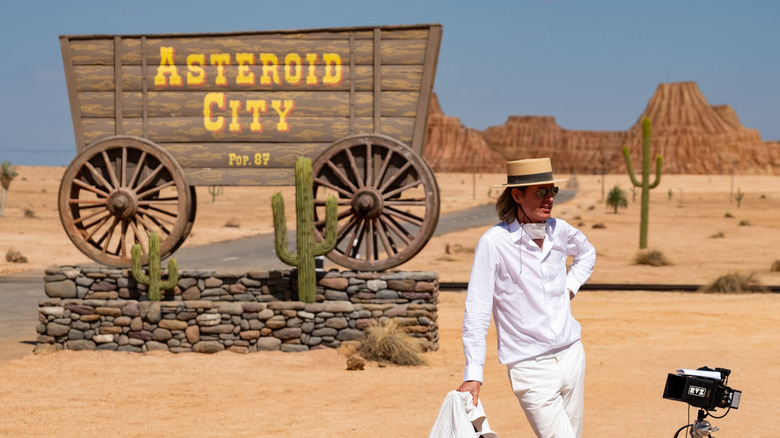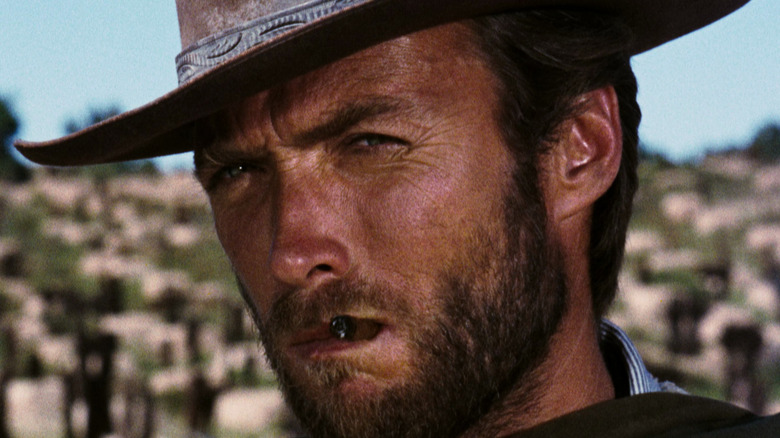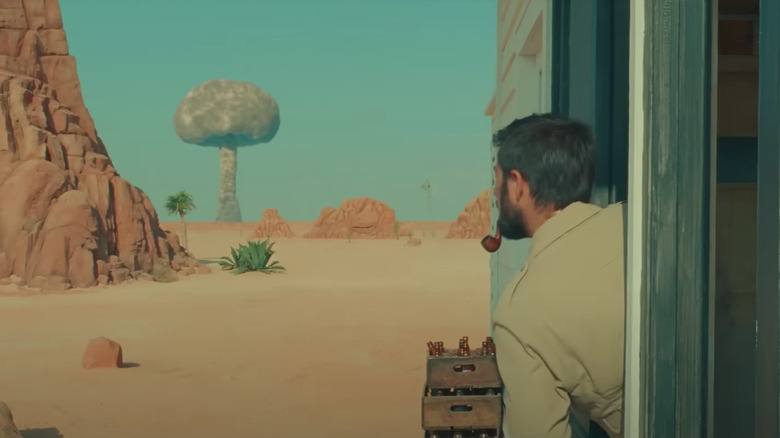Where Wes Anderson's Asteroid City Was Filmed, And Why That Location Makes The Movie Work
Wes Anderson may be one of our most recognizable and celebrated American filmmakers, but he very rarely makes his films in the United States. Since the turn of the 21st century, only two of his nine features — "The Royal Tenenbaums" and "Moonrise Kingdom" — have been shot in his home country. "The Grand Budapest Hotel" was made in Germany, "The Life Aquatic with Steve Zissou" in Italy, "The Darjeeling Limited" in India, and "The French Dispatch" in, well, France (where Anderson has lived for many years). Even his two stop-motion animated films, "Fantastic Mr. Fox" and "Isle of Dogs," were crafted in England. To be fair, these stories, while usually about Americans, are not set in the United States themselves. Enter his latest film, "Asteroid City."
This is the first time since "Moonrise Kingdom" that Anderson has told a story firmly set in America — be it the American West or, in the film's superstructure, the New York theatre world. However, Wes Anderson chose not to hop back across the pond to tackle his melancholic science-fiction romantic dramedy, even though that seems like the logical thing to do. Instead, he remained in his European stomping grounds and shot Asteroid City" in Chinchón, Spain.
While it is certainly easier to hop on a train from Paris to Madrid than to deal with the hassle of a trans-Atlantic flight, the reasoning behind Anderson's decision to shoot in Spain wasn't simply convenience. Not only was it a practical location for the shoot, it provided a unique interpretation of the American West that allowed the feeling to be a bit more theatrical.
The cinematic West, not the real one
Spain has been doubling on screen as the American West for decades now, whether you realized it or not. This is most evident in the classic spaghetti Westerns from the 1960s, directed by the likes of Sergio Leone, Sergio Corbucci, Giulio Petroni, and more. Though these were Italian productions helmed by Italian directors, more often than not they were shot in Andalusia, the southernmost region of Spain. Its mountainous, rocky terrain with a dry climate made it an excellent spot to reproduce what these Italian folks believed the American West to be. While it's certainly similar, there's is something just a tad heightened and unreal about the setting, making them dramatically compelling locations.
The Western elements of "Asteroid City" are not supposed to resemble reality, as the conceit of the film is that it is actually a television play being performed, rather than just a story that is happening. Mining the country that had so reliably provided that heightened sensibility to the American West makes complete sense to achieve that desired effect. In a behind-the-scenes featurette for the film, Wes Anderson explicitly states that he wanted a "slightly exaggerated desert," and if you go to the real place, you aren't really going to get that exaggeration. You're just going to get reality, and with each new feature, he pushes his style further away from reality.
Flat and endless
Chinchón, where "Asteroid City" was shot, is about a four hour drive north of Andalusia. It maintains some of the heat and dryness that made the south such a popular place for Westerns, but instead of the mountainous terrain of the area, Chinchón provided something equally important for Wes Anderson: flatness. In the behind-the-scenes video he goes on to say:
"I had a thought that we might find a place that was very, very flat and open, and build our rocks and build our town ... Well, if you want flat land and you decide you want to shoot in Europe, I think you'll soon find yourself in Spain. Quite a perfect spot for us to do this and with the right amount of room."
Flatness is also crucial to a Wes Anderson film, with his shooting style that relies so much on flat planes running either parallel or perpendicular to the camera. For this particular story, the flatness also enhances two important things. One, there's the isolation of the town, and the endless flat desert in every direction is crucial for establishing the isolation. Two, that flatness evokes the flatness of a traditional theatrical stage, where the story is ostensibly set. Everything being built on this endless flat surface keeps you constantly keyed into the fact that what you are watching isn't real.
Wes Anderson was able to build this little, one-road town exactly how he wished, constructing a world where he didn't even have actors' trailers within the vicinity. Shooting in the actual American West, he most likely would not have had this level of control over the setting — and with a director as meticulous as Wes Anderson, I want him to have as much control as possible. Chinchón gave him that.


